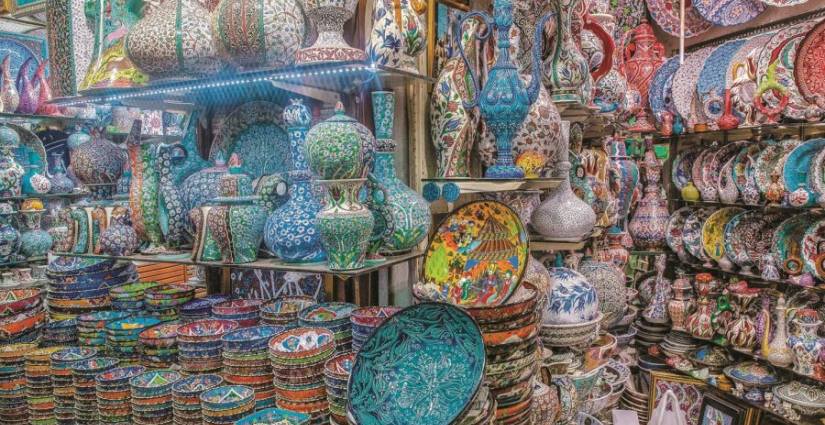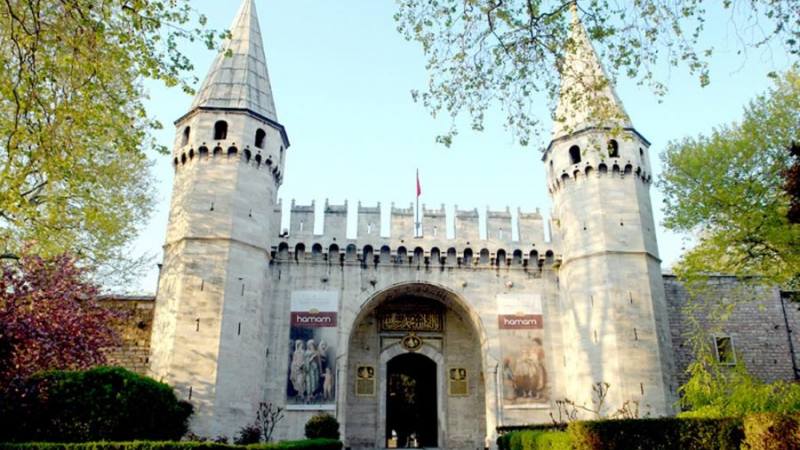
TOPKAPI PALACE
Topkapi Palace is the center of state’s governance, education and it is the place of residence Ottoman Sultan’s. Ottoman Sultans and Palace people had been living until the middle of the 19th century in the palace, which was builded by Istanbul conqueror Sultan II. Mehmed between 1460-1478 and some additions were made over time. After the Ottoman monarchy was abolished in 1922, Topkapı Palace was turned into a museum on April 3, 1924, by the order of Mustafa Kemal Atatürk.
After the Conquest, Fatih Sultan Mehmed built a palace, which will be known as “Eski Saray”, in Beyazit, where Istanbul University is existing nowadays. After this first palace, Fatih built “Çinili Köşk” and after that, “Topkapi Palace”, which will be a residence for Fatih later. Fatih called this palace as “Saray-ı Cedid” in Ottoman Language, which is meaning “Yeni Saray”. The name of the Yeni Saray as Topkapı Palace was realized as follows: The name of this palace was given to the new palace when the large wooden seaside palace, which was built by Sultan I. Mahmud near the Byzantine walls and called "Topkapusu Sahil Sarayı" because of the salute cannons in front of it, was completely destroyed in a fire.
The relationship between Ottoman State Philosophy and Saray-tebaa have an important role of the determination of Topkapı Palace, which developed and grew for centuries. Also, in the first years of building of the Topkapi Palace, Fatih Sultan Mehmed got inspired from Edirne Palace’s plan and magnificence, which was built by his father Sultan II. Murad’s at the near of Tunca River,
Topkapi Palace is a modest palace; the great expenditures of the empire were mostly made for magnificent mosques, barracks, bridges, caravanserais and accommodation facilities. Even the famous architect Mimar Sinan built just one section in this palace. However, The Palace’s location in Sarayburnu provide a natural beauty and magnifience as well as it’s tile, structure intertwined with nature, buildings.
Topkapi palace’s plan is consist of the places for state affairs between various courtyards and gardens, buildings and mansions of Sultan’s residence and palace officials, who lived in palace. The Palace, which was built on the Byzantine acropolis at Sarayburnu, at the tip of the Istanbul peninsula and between Marmara Sea, Bosphorus and Haliç, was surrounded by high walls called “Sur-ı Sultani” with a length of 1400 meters, on the land and by the sea, with Byzantine walls. The area covered by the palace is approximately 700 thousand square meters.
Alay Meydanı, Aya İrini, Bâb-ü's Selâm, Bâb-ı Hümâyun, Divan Meydanı, Kubbealtı (Divan-ı Hümayun), Adalet Kasrı, Dış Hazine, Zülüflü Baltacılar Ocağı, Has Ahırlar, Beşir Ağa Camii ve Hamamı, Saray Mutfakları, Babüssaade, Sohum Kalesi Kitabesi, Enderun Avlusu, Arz Odası, III. Ahmed Kütüphanesi (Enderun Kütüphanesi), Fatih Köşkü (Enderun Hazinesi), Hazine Koğuşu, Has Oda ve Kutsal Emanetler Dairesi, Ağalar Camii, Kilerli Koğuşu, Kuşhane ve Harem Kapısı, Has Oda Koğuşu/Padişah Portreleri, Dördüncü Avlu, Sünnet Odası, Revan Köşkü, Bağdat Köşkü, İftariye Kameriyesi (Mehtaplık), Sofa Köşkü, Sofa Camii, Mecidiye Köşkü, Hekimbaşı Odası / Baş Lala Kulesi, Esvap Odası, Harem, Dolaplı Kubbe / Harem Hâzinesi / Haremeyn Hâzinesi, Şadırvanlı Sofa, Kara Ağalar Mescidi, Kara Ağalar ve Kara Ağalar Taşlığı, Cümle Kapısı, Valide Taşlığı, Kadın Efendi Daireleri, Valide Sultan Dairesi, Hünkâr ve Valide Sultan Hamamları, Hünkâr Sofası, III. Murad Has Odası, I. Ahmed Has Odası, Yemiş Odası / III. Ahmed Has Odası, Çifte Kasırlar / Veliahd Dairesi, Altınyol, Cariyeler ve Kadın Efendiler Taşlığı, Gözdeler Dairesi ve Mabeyn Taşlığı, Arabalar Kapısı /Kızlar Kapısı, Nöbet Yeri ve Cariyeler Koridoru are among the parts of this magnificent structure.
The extraordinarily rich collections of Topkapi Palace and its history woven with extremely interesting stories make this palace one of the most value seeing in the world. imperial Treasury, European Porcelains and Glasses, Copper and Tombak Kitchenware, Chinese and Japanese Porcelains, Silvers, Hırka-i Saadet Dairesi and Sacred Relics, Istanbul Glass and Porcelains, Sultan Dresses, Sultan portraits and painting collection, Weapons are the collections exhibited in the museum.
(Source: kulturportali.gov.tr)
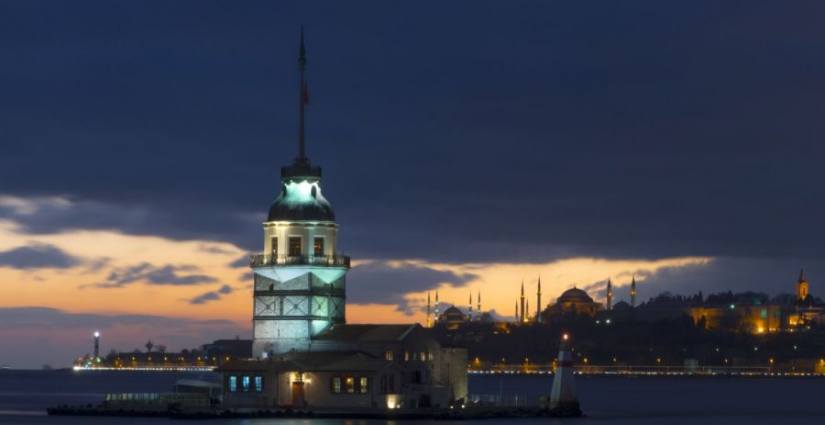
MAIDEN'S TOWER
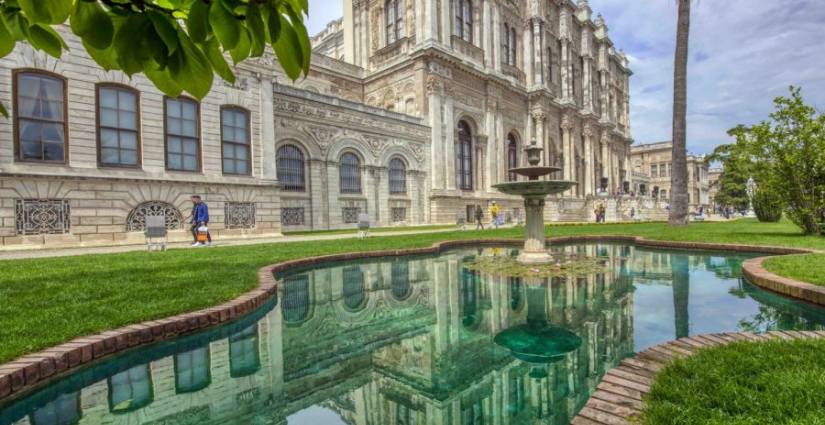
DOLMABAHCE PALACE
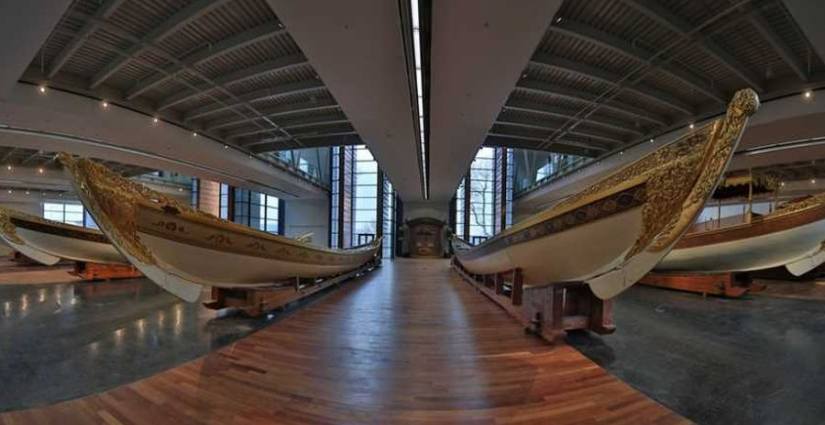
NAVAL MUSEUM
